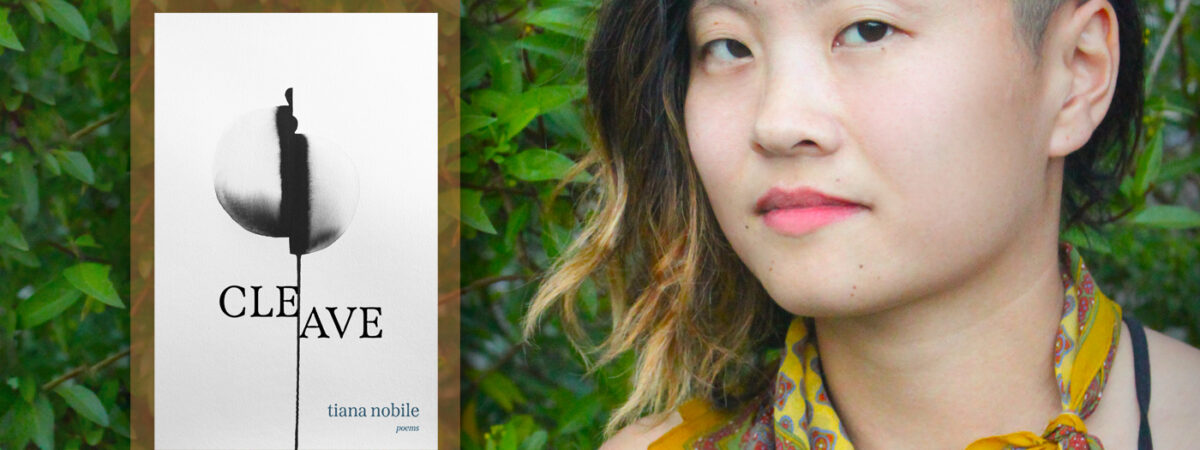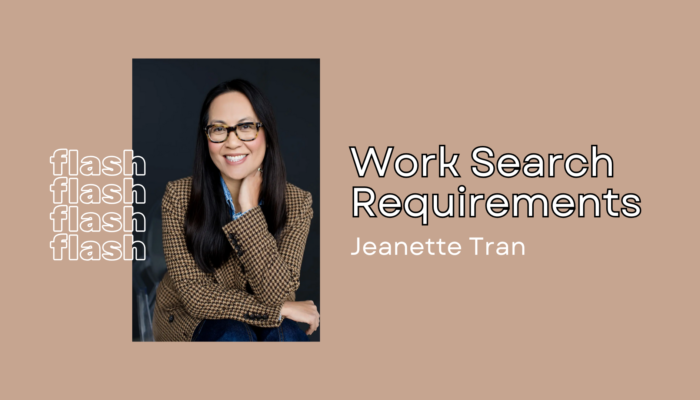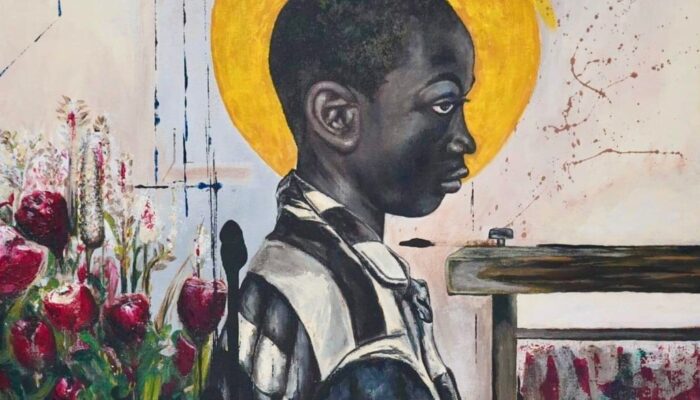Tiana Nobile is an excavator. In Cleave, her debut collection of poetry, she makes tools of personal records, attachment theory, and a signature fierce lyric to expose the violent, dehumanizing practices of the multibillion-dollar adoption industry. But make no mistake about the collection’s multitudes—banded across poems that investigate and redistribute power are profound moments of hope, glittering inventive forms that reveal the poet’s veneration of the natural world. I had the distinct honor of editing Cleave in preparation for its publication and remain in awe of Tiana’s ability to both educate and enchant, even as she traverses sensitive ground. At the start of 2021, after many months of self-isolation due to the COVID-19 pandemic, Tiana and I traded the questions and answers below as a means of reflecting on the physical, spiritual, and emotional work that ushered Cleave into the world.
— Leslie Sainz
To purchase a copy of Tiana Nobile’s Cleave, please visit www.hubcity.org/books/poetry/cleave.
Leslie Sainz: Cleave is no stranger to poetic erasure—the poem “The Stolen Generation” features an erasure of the Aboriginal Protection Act of 1869 and the Aborigines Protection Act of 1886, and the book presents and manipulates documents that pertain to your transnational adoption, including a letter requesting that you, as an infant, be baptized. In reading and rereading these poems, I was reminded of Solmaz Sharif’s essay “The Near Transitive Properties of the Political and Poetical: Erasure” and her discussion of erasure as “obliteration,” as assuming the role of the state. In the context of transracial and transnational adoption—a system built on abandonment, separation, and trauma that is hallmarked by not only the removal from one’s birth country but oftentimes one’s birth culture and language—I’m curious about how you arrived at the decision to employ erasure on actual source materials. How did your sense of agency shift when you applied your adult hand to documents that blatantly pointed to your inability to consent?
Tiana Nobile: Historically and politically, it’s true that erasure most frequently equates some form of violence on behalf of the state. What, then, does it mean to enact an erasure in the opposite direction? “The Stolen Generation” is named after the countless aboriginal children who were forcibly removed, in some cases literally kidnapped, from their families and given to white Australian families for adoption. This horrific practice is not unique throughout history (you might have heard about the mass grave of Native children, some as young as three years old, that was recently discovered at a former “residential school” in Canada), and its purpose was to essentially erase aboriginal life and culture from Australia. This is genocide, possibly the most egregious form of erasure. Reading the legislation that made these acts legal was illuminating and appalling; they’re called the Aboriginal PROTECTION Acts for fuck’s sake! It felt necessary to call attention to that hypocrisy in the poem.
I’ve been a student of erasure for a while, and I’ve learned so much about the power of subversion. Solmaz Sharif’s Look and Srikanth Reddy’s Voyager are two groundbreaking examples of this. To manipulate the language of the oppressor in order to disrupt that version of the truth and uplift a previously silenced perspective is a powerful political act and one that really spoke to me as I began working through my own archive of records.
Erasure is particularly special because it points to so many layers: the original text, what is missing from the original, and the newly constructed, unearthed narrative. To be simultaneously immersed in a white family, stripped of any cultural ties to my country of origin, and for the reflection in the mirror to be an ever-present reminder of this migration and loss—I think of my body as a physical manifestation of palimpsest. In Cleave, erasure provides me with a poetic space to reckon with the erasure that happens as a result of adoption. It enables me to re-frame the stories I was told. I can finally uncover what is submerged within the language of my paperwork, give it a voice, and demand visibility.
LS: “The Nature of Love,” Harry Harlow’s seminal 1958 research into the science of attachment and affection is a pivotal motif in Cleave, and I’d go so far as to say it’s also a specter that haunts the book, even down to the ways the poems that respond to Harlow’s research appear as concrete poems in the shape of soulless figures. Perhaps my favorite poem in this sequence is “Interview with Dr. Harlow,” which is, as its title suggests, composed of increasingly accusatory questions. At what point in the creation of this sequence did you decide to make a case study of the cruel and controversial psychologist? How did the transition from lifting language from “The Nature of Love” to confronting Harlow directly occur?
TN: Early on in my writing process, I discovered Korean adoptee JaeRan Kim’s blog “Harlow’s Monkey,” which introduced me to this conceit of adoptee as experimental lab monkey. I found it to be so provocative. From there, I read Harlow’s research papers and his biography, Love at Goon Park by Deborah Blum, and watched old video footage from his lab in Wisconsin on YouTube. At first, I found his conclusions on attachment theory and the significance of care between caregivers and children to be so illuminating. It helped me deepen my understanding of the impact of abandonment and separation on the psychological development of adoptees. However, the deeper I got into his story, the more I learned about how problematic and abusive his practices became over time and how that mirrored his own psychological unraveling. I also learned that, paradoxically, this man, whose life work was spent researching early child development, was an absent and alcoholic father. I realize now that in many ways, I had put this expert scientist on a pedestal because his research was so personally insightful. When I began to examine his research with a more critical light, I made disturbing connections between his behavior and that of various players in the adoption industry. From there, a confrontation felt inevitable. Originally, “Interview with Dr. Harlow” was a blocky prose poem, and I so love your suggestion to give it a more severe shape. Now, I think of that poem’s triangular form as a pickax or an arrowhead to shatter the pedestal. To hold him accountable.
LS: While there’s tenderness abound in Cleave, I was struck by the few but resonant moments of laughter in the collection. It was especially revealing to me that they tend to surround your speaker’s responses to questions and comments that adoptees frequently receive. For example, the poem “Where are you really from?” begins with “Intercourse, Pennsylvania,” while the poem “Did you know” starts “my sister was Fed-Exed from Korea?” and ends with a reflective, laughter-filled marker of healing between siblings. What roles do irony and intimacy play in the way the book dispels myths about adoption?
TN: I don’t think I’ve ever intentionally tried to be funny in my writing, but I’m pleasantly surprised when it has that effect. I wrote a poem in undergrad about having sex with god, and the first time I read it in public, two unexpected things happened: people laughed, and their laughter delighted me. Finally, having escaped my Catholic upbringing, the poem was an exercise in how to be as flagrantly blasphemous as possible. I remember being shocked that people found it funny, but I also finally understood the high that comedians get in front of a crowd.
In that poem and the ones that you mention, I think it’s partly the absurdity of it that leads to humor. As an Asian American, the incessant insistence of the question “Where are you from?” often followed by “No, where are you really from?” can be so exhausting. In the poem, I can finally confront this question and push back. Tell a different story. Your edit to italicize the states’ names helps bring the embedded narrative to the surface. It also helps emphasize the positionality of the poem as being distinctly American.
I think irony can be a useful tool to dispel commonly held misbeliefs in the way that it disrupts people’s expectations. To many people, the idea of having sex with god is beyond irreverent, but to shine a light on the absurdity of it forces us to actually look at it, to ask “Why is this absurd?” and confront our reaction. From there, we can begin to strip it down and excavate our own truths.
LS: It’s hard to avoid the condition of safety when reading Cleave—how it’s yearned for, how it’s owed, how it’s continually gifted to the self by the self. What did you do off the page to protect yourself and your story as you were writing these deeply vulnerable poems?
TN: I love this tender question. I’m so immensely grateful to have such a strong community of friends and chosen family who have been there for me with wine and laughter. I’ve also had an active therapy practice throughout my adult life, which has provided me with a safe space to articulate a lot of the questions that serve as anchors for my book. Also: making pasta, baking bread, tending to my garden, cuddling with my cat, kissing my boyfriend. All of these are ongoing sources of safety and warmth.
LS: Most non-adoptees fail to acknowledge the many privileges associated with having easy or immediate access to their birth certificates, family medical history, etc. As we touched on previously, Cleave manipulates actual source materials from your transnational adoption, such as a pre-flight report from 1988. Can you speak to your process of engaging with these records? With their pre-existing lack and nuance?
TN: My father is a lawyer and keeps meticulous records. As a kid, I knew there was a folder with my name on it in his filing cabinet, and every so often, I would pull it out and look through it. It was the closest I could get to an origin story. Years later, when I began engaging with these documents on a deeper level, I was struck by how cold and clinical they are. For institutions that are in the business of negotiating real people’s lives, their records are totally bereft of feeling. There’s also a general understanding among adoptees that our files are often fabricated or falsified on purpose. I’ve heard different stories on the reasons why, including to make babies seem more “desirable” to potential parents. There’s also the horrifying practice of lying to biological families and literally stealing their children. Knowing all of this made me hyper-critical while engaging with my file. It was interesting to realize that, rather than clarifying or filling in any gaps of knowledge, the documents often led to more questions. For example, in the “Child’s Pre-Flight Report” document, the section under “Legal Status” is noticeably blank. From there, I learned that Koreans lose their citizenship when they become naturalized in another country. I also learned that citizenship in South Korea used to be patrilineal, so mixed race children of Korean mothers and American GI fathers born during the Korean War—the neocolonial event that sparked Korea’s adoption phenomenon—were not even eligible for citizenship. What happened, then, if one of these children’s adoptive families never applied for naturalization? There have been a number of stories of Korean adoptees who have been deported because of this lack of oversight. Where do they belong if no one will accept them? I’m reminded of another piece of paper I found: a photocopy of an identification card I was given by INS that features a black and white photograph of my infant face in profile with the title “Resident Alien” looming overhead.
By incorporating the language of such documents in my work, I can highlight the cold sterility of it and infuse it with feeling. I want the poem to serve as a reminder that there is a very real person who is the subject of these forms, a person whose humanity is repeatedly overlooked to the point of literal omission.
LS: I remain in awe of what I’d describe as your wild, elemental lyric. You and your speakers are unafraid of invoking lions and volcanoes, orchards and sandbanks, thunderstorms, and floods to erode the existing adoption narrative and hold space for ongoing grief. The image systems that render the worlds of your poems are often ecological and expansive. Harlow’s monkeys notwithstanding, can you speak to the roles that flora and fauna play in your poetics? For a poem like “Abstract” which begins with “Igneous rocks are formed by fire. Conceived in the belly of a volcano, lava drips down its side and deposits at the base,” what comes first—the discovery of compelling natural phenomena or the guiding metaphor?
TN: The writing of “Abstract” was originally inspired by a third-grade science unit on the life cycle of rocks! I’ve been an elementary school teacher for the past twelve years. In this case, I definitely hadn’t thought about rocks since I was in the third grade, and it was so cool to learn about the different kinds and how they change over time alongside my students. It often happens that way—I learn about or observe something that I find interesting, and it sparks a poem. Most of the time, it’s through the writing that I begin to make or discover a connection, which can be really thrilling.
I grew up on Long Island and spent much of my childhood yearning for New York City. When I was old enough, I spent as much time there as possible. I was enamored by its chaotic streets and cramped subways; I loved the wildness of it, which was the opposite of my monotonous, super-white suburb. When I moved to Louisiana, my life slowed down significantly. I began spending more time in nature and fell in love with another kind of wild, full of bayous, alligators, and cypress trees. It wasn’t too long before my surroundings started to slip into my poems. Living in a place that’s below sea-level and actively sinking has also made me acutely aware of the transience of a place. Writing flora and fauna into my work is one way I can honor the land upon which I live and the people who have tended it before me.
Tiana Nobile is the author of Cleave (Hub City Press, 2021). She is a Korean American adoptee, Kundiman fellow, and recipient of a Rona Jaffe Foundation Writer’s Award. A finalist of the National Poetry Series and Kundiman Poetry Prize, her writing has appeared in Poetry Northwest, The New Republic, Guernica, and the Texas Review, among others. She lives in New Orleans, Louisiana. For more, visit www.tiananobile.com
Leslie Sainz is a first generation Cuban-American, born and raised in Miami, Florida. A 2019 National Poetry Series Finalist, her work has appeared in or is forthcoming from New England Review, Kenyon Review Online, AGNI, jubilat, Narrative, and others. She is the recipient of a 2021 National Endowment for the Arts Poetry Fellowship, and has received scholarships, fellowships, and honors from CantoMundo, The Miami Writers Institute, The Adroit Journal, and The Stadler Center for Poetry & Literary Arts at Bucknell University. For more on her writing, and editing services, visit: www.lesliesainz.com.




